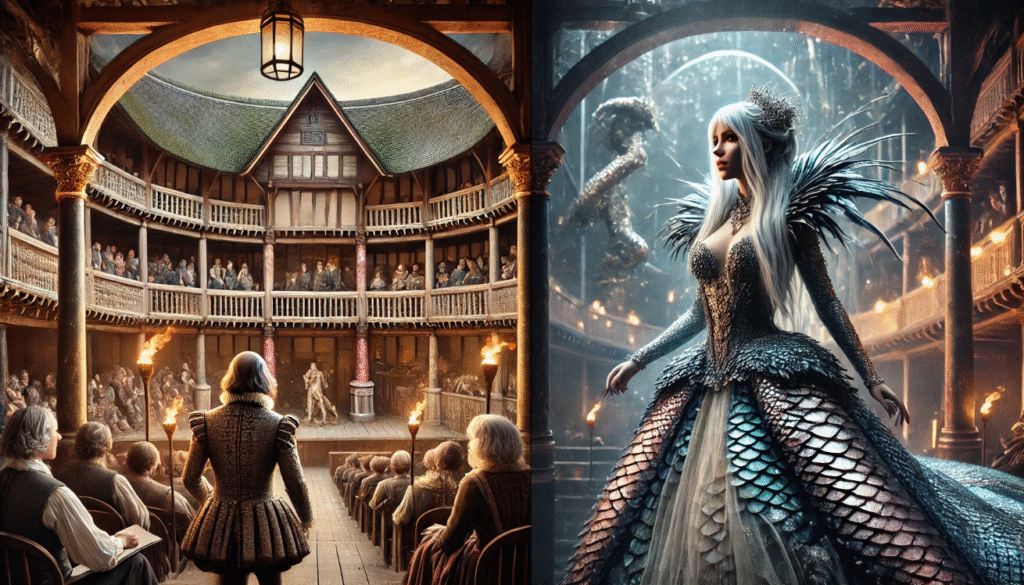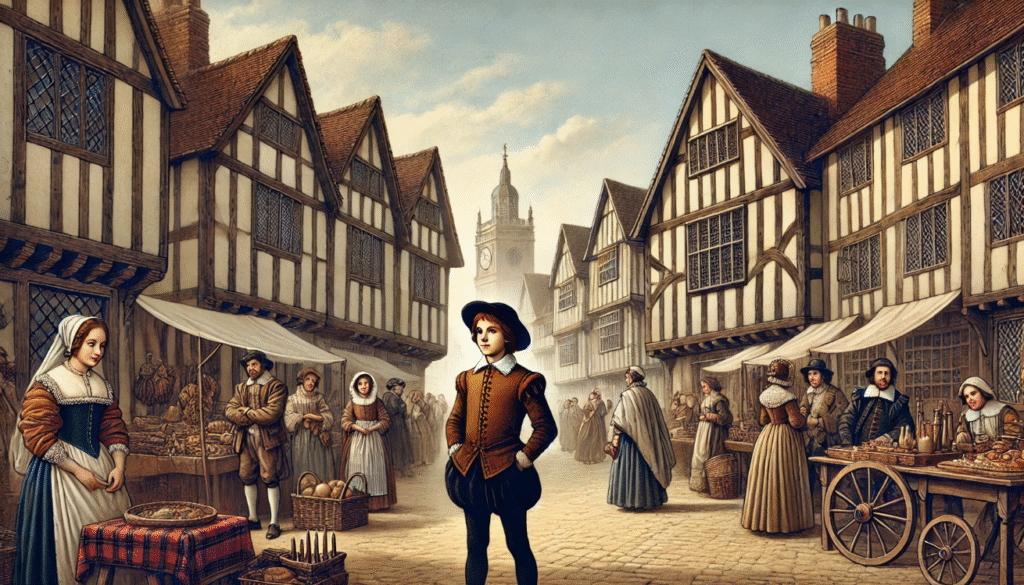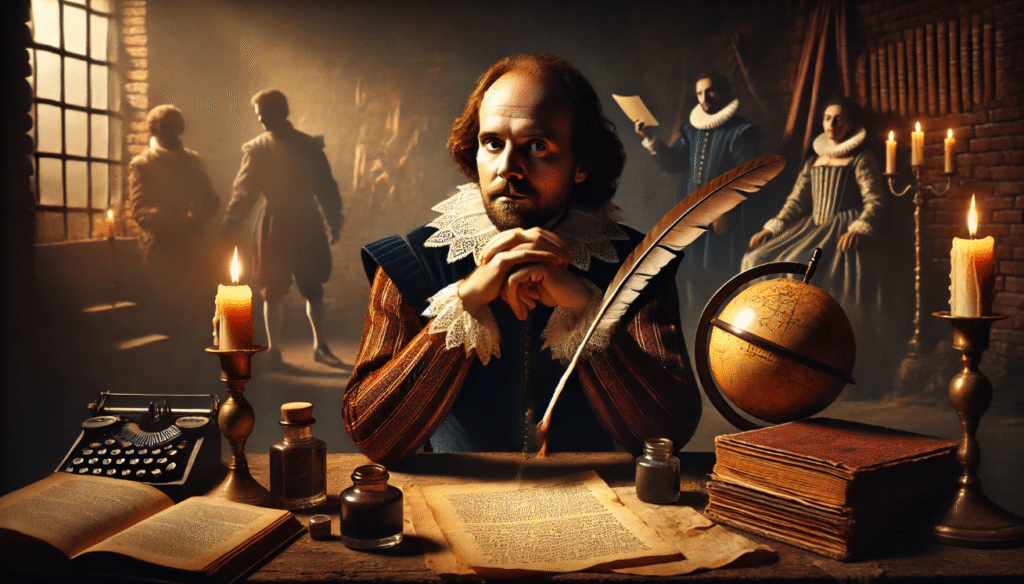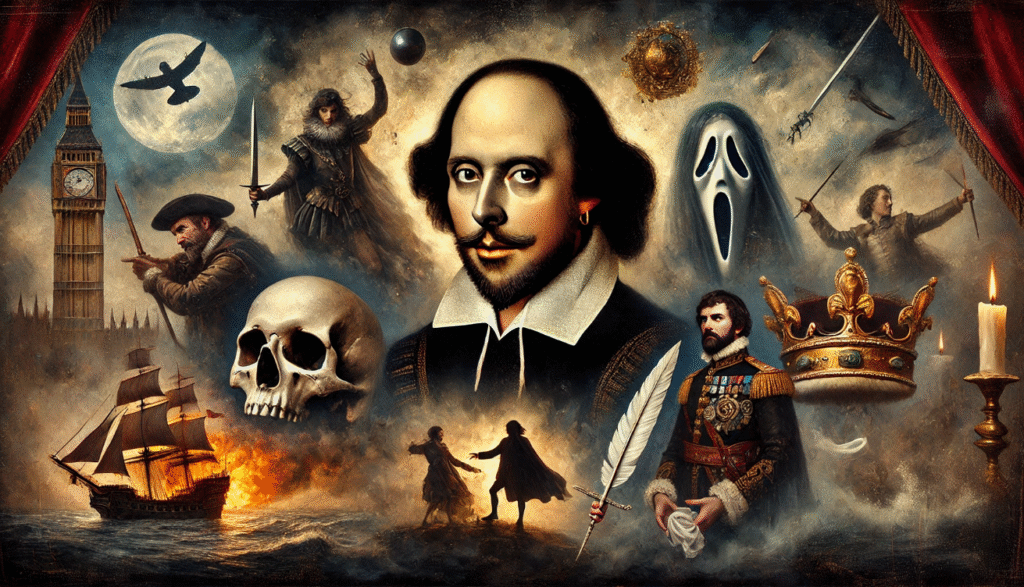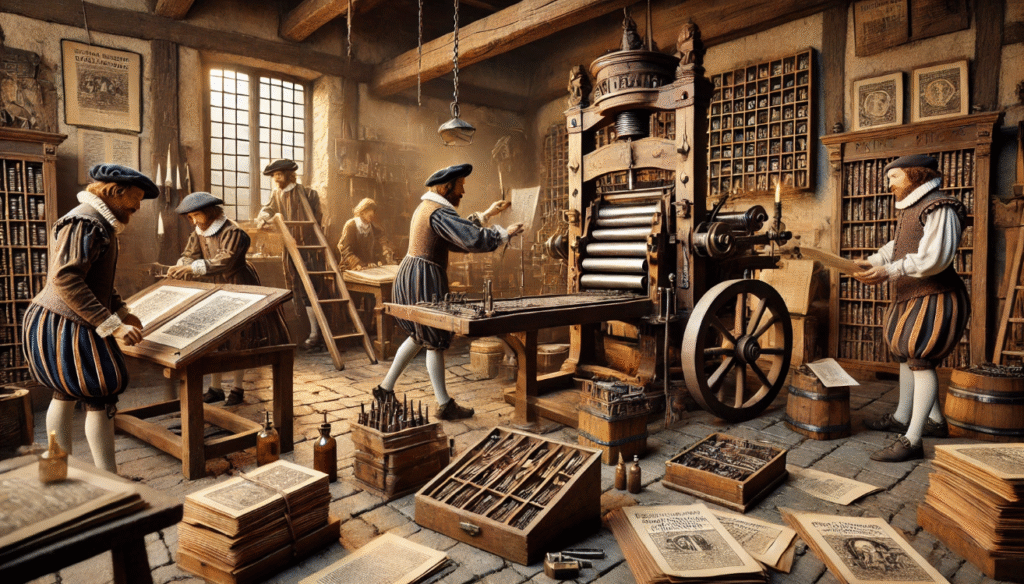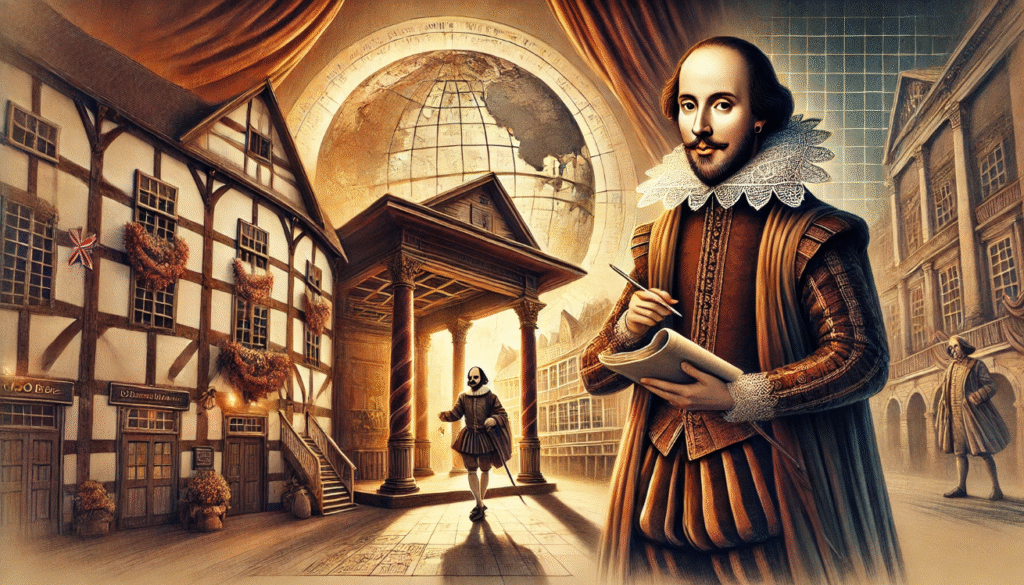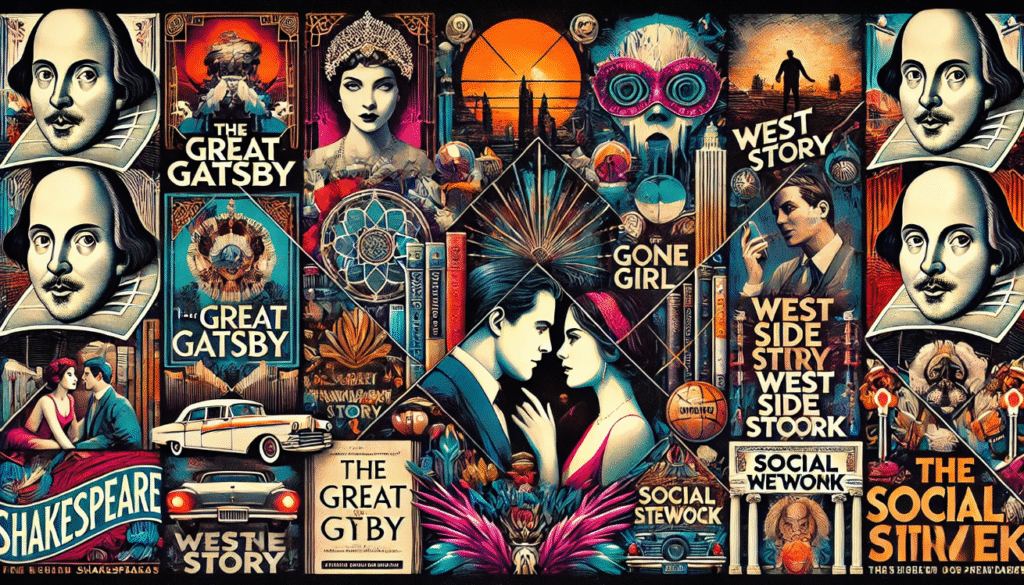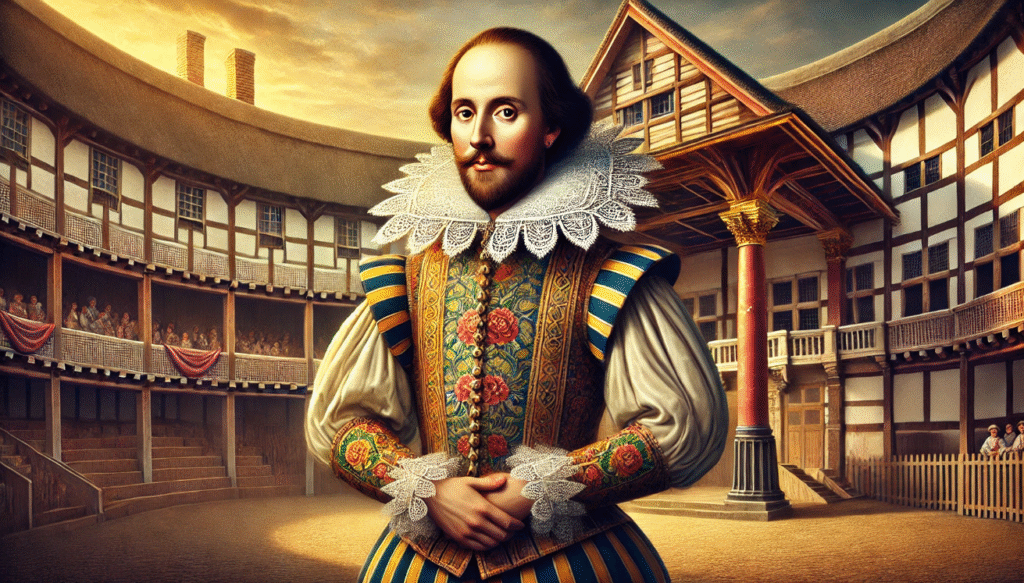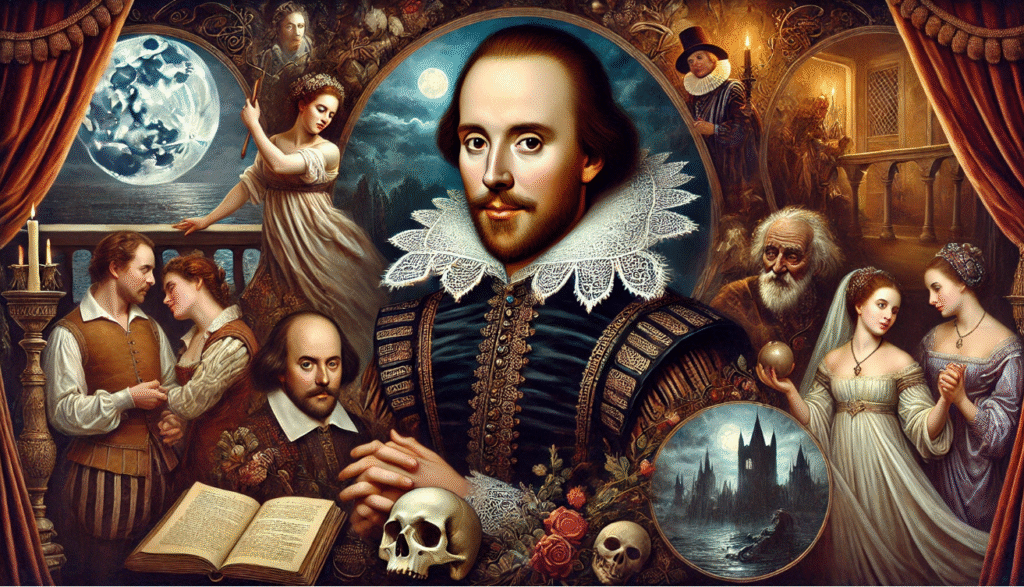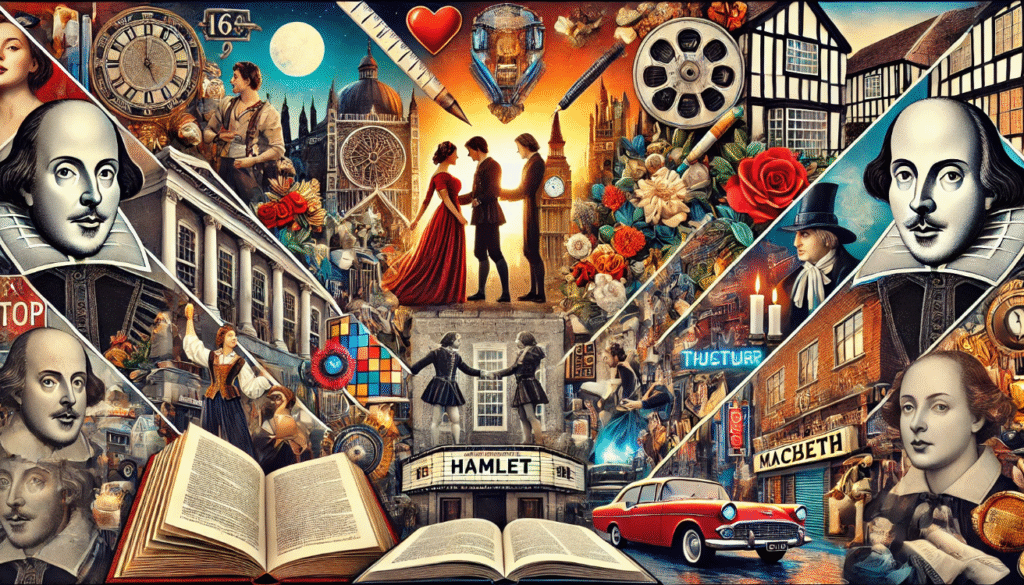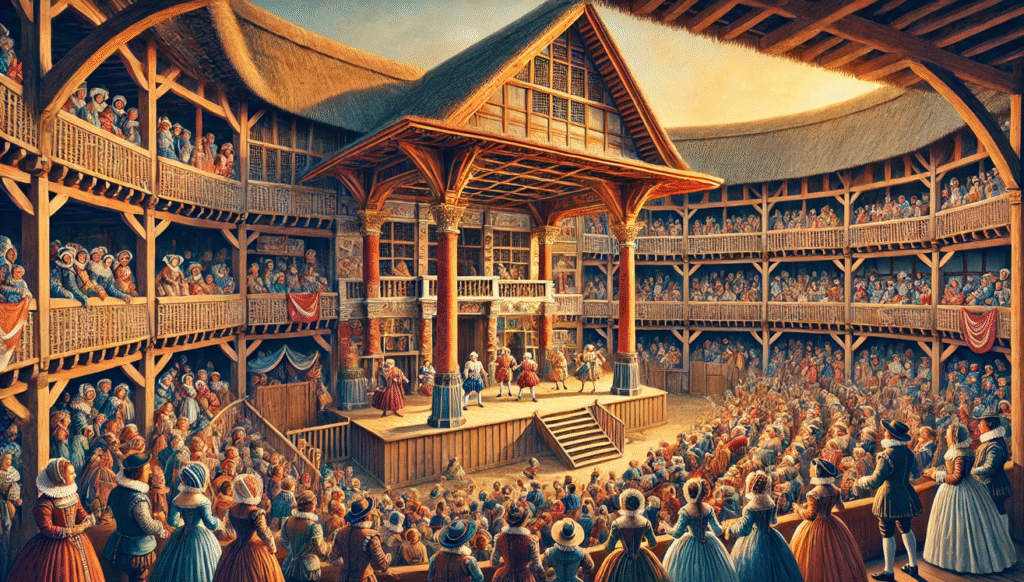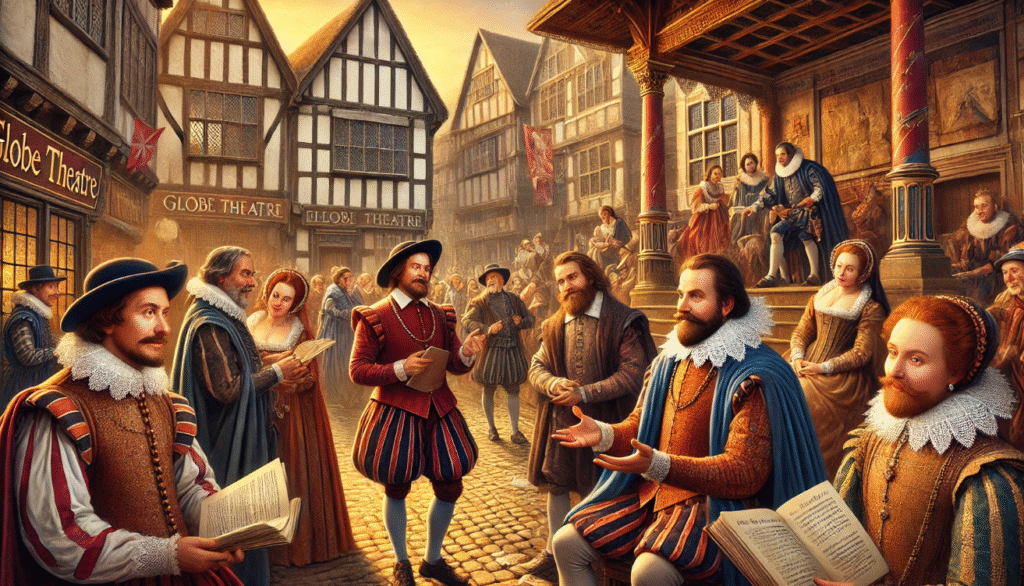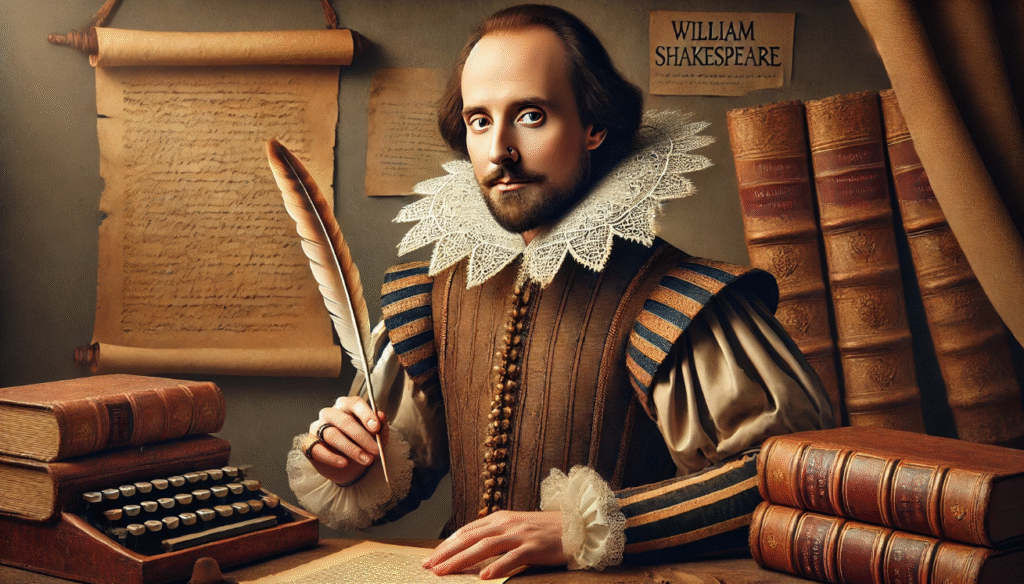 Shakespeare’s influence on theatrical conventions is undeniable, shaping the way modern theater is conceived and performed. From the structure of plays to the complexity of characters, Shakespeare’s influence on theatrical conventions revolutionized the world of drama in ways that continue to resonate with audiences today. But his impact isn’t limited to the realm of language or storytelling alone. Much like the evolving costumes of Daenerys Targaryen in Game of Thrones, which visually communicate the character’s transformation, Shakespeare’s own innovative use of stagecraft and design contributed to a new era of theatrical expression. This article will explore how Shakespeare’s influence on theatrical conventions groundbreaking ideas—ranging from dramatic structure to character development—have left an indelible mark on modern theater.
Shakespeare’s influence on theatrical conventions is undeniable, shaping the way modern theater is conceived and performed. From the structure of plays to the complexity of characters, Shakespeare’s influence on theatrical conventions revolutionized the world of drama in ways that continue to resonate with audiences today. But his impact isn’t limited to the realm of language or storytelling alone. Much like the evolving costumes of Daenerys Targaryen in Game of Thrones, which visually communicate the character’s transformation, Shakespeare’s own innovative use of stagecraft and design contributed to a new era of theatrical expression. This article will explore how Shakespeare’s influence on theatrical conventions groundbreaking ideas—ranging from dramatic structure to character development—have left an indelible mark on modern theater.
Shakespeare’s Innovations in Dramatic Structure

Shakespeare’s approach to dramatic structure transformed the way stories were told on stage, and his influence can still be seen in modern theater. One of his key innovations was the development of the three-act structure, which has become the standard for most plays today. In his works, Shakespeare effectively divided the plot into three main parts: the introduction (or exposition), the conflict (rising action), and the resolution (climax and denouement). This structure helped create clear pacing, making his plays engaging and emotionally compelling for audiences.
Another important contribution was the use of subplots. Shakespeare seamlessly wove secondary stories into his main plot, which enriched the narrative and provided contrast. These subplots often mirrored the main story’s themes, allowing for deeper exploration of the characters and ideas.
Finally, Shakespeare mastered dramatic tension and pacing. His ability to balance rising action, conflict, and resolution ensured that audiences remained captivated. The rhythm of his plays, with their unpredictable twists and climactic moments, laid the foundation for modern theatrical storytelling.
Through these innovations, Shakespeare created a lasting template for playwrights, offering both structure and flexibility in the art of dramatic writing.
Theatrical Characterization and Complex Characters

One of Shakespeare’s most significant contributions to theater was his ability to create multi-dimensional, complex characters. Unlike earlier plays that often featured one-dimensional or stereotypical characters, Shakespeare’s protagonists, like Hamlet and Macbeth, were rich with inner conflict, psychological depth, and moral ambiguity. This complexity made them feel more human and relatable, a revolutionary shift in how characters were portrayed on stage.
Shakespeare also explored the psychology of his characters in a way that was groundbreaking for his time. His characters wrestle with profound internal struggles, from Hamlet’s existential doubts to Lady Macbeth’s guilt and descent into madness. These deep emotional and psychological layers set a new standard for character development, influencing modern playwrights to focus on the inner workings of their characters as well.
Additionally, Shakespeare popularized the use of character archetypes—such as tragic heroes, the wise fool, and the villain—which continue to shape storytelling in contemporary theater. His skillful manipulation of these archetypes allowed for a rich variety of characters that audiences still connect with today.
Through his innovative characterization, Shakespeare transformed the role of the actor and paved the way for a deeper, more nuanced approach to character portrayal in modern theater.
Language and Dialogue: The Power of Speech in Theater

Shakespeare revolutionized theater through his mastery of language and dialogue. His writing wasn’t just beautiful—it was powerful, purposeful, and deeply expressive. He used language as a tool to reveal character emotions, explore complex ideas, and drive the plot forward.
One of his most famous techniques was the use of soliloquies and monologues, allowing characters to speak directly to the audience and share their innermost thoughts. This made the audience feel closer to the character and added emotional depth to the performance. Today, this method is still widely used in theater and film to build intimacy and insight.
Shakespeare also played with verse and prose. He used verse (especially iambic pentameter) for noble or emotional moments and switched to prose for casual, comedic, or lower-class characters. This contrast gave his dialogue rhythm and helped define characters without needing elaborate staging.
In addition, Shakespeare used wordplay, metaphors, and rhetorical devices to entertain and engage audiences. His language could be witty, sharp, poetic, or profound—all within a single scene. These techniques helped elevate theater into an art form and continue to inspire modern playwrights and screenwriters.
Shakespeare showed that dialogue isn’t just speech—it’s action, emotion, and insight. His use of language reshaped theater and made the spoken word a central force in storytelling.
Shakespeare’s Influence on Stagecraft and Performance Techniques

Shakespeare didn’t just change the way stories were written—he transformed how they were performed. His work had a lasting impact on stagecraft and performance techniques that still shape modern theater today.
At the Globe Theatre, Shakespeare embraced a thrust stage, where the audience surrounded the action on three sides. This setup created a more intimate and immersive experience, encouraging direct interaction between actors and audience—a practice that remains powerful in today’s theater.
He also relied on minimalist staging. Without elaborate sets, the focus shifted to dialogue, movement, and imagination. Modern productions often follow this lead, proving that strong performances and storytelling don’t need expensive visuals.
Costume and symbolism played an important role too. Shakespeare used costumes not only for style but to show status, personality, and transformation. This practical technique helped the audience instantly understand characters—an approach still used in contemporary theater design.
Finally, Shakespeare gave actors more freedom with gesture, voice, and improvisation, encouraging expressive and dynamic performances. His plays demanded emotional range and physical presence—skills that are now essential in modern acting.
In short, Shakespeare laid the groundwork for a performance that’s bold, engaging, and deeply human—stagecraft that continues to inspire actors and directors worldwide.
The Role of Humor and Irony in Shakespeare’s Plays

Shakespeare used humor and irony not just to entertain but to add depth and contrast to his stories. His clever use of comedy made even serious themes more relatable and emotionally powerful.
In his comedies, like A Midsummer Night’s Dream or Much Ado About Nothing, he used witty dialogue, mistaken identities, and playful banter to create light-hearted, engaging moments. These scenes helped audiences connect with characters and provided relief from tension.
Even in his tragedies, Shakespeare skillfully added comic relief. Think of the gravediggers in Hamlet or the Porter in Macbeth. These moments of humor created emotional balance and made the darker scenes even more impactful.
Shakespeare also mastered verbal irony and dramatic irony. His characters often said one thing but mean another, keeping audiences alert and entertained. Dramatic irony—where the audience knows something the characters don’t—added suspense and emotional weight to scenes.
By blending humor with serious themes, Shakespeare showed that laughter and tragedy can exist side by side. His use of irony and comedy shaped modern theater’s ability to explore human nature in all its complexity.
Shakespeare’s Lasting Legacy on Contemporary Theater
Shakespeare’s influence on contemporary theater is everywhere. His themes, characters, and techniques continue to shape how stories are written, staged, and performed today.
Modern playwrights still draw from Shakespeare’s use of universal themes—love, power, betrayal, ambition, and identity. These timeless ideas make his work relevant across cultures and generations, and they inspire new stories in both traditional plays and modern adaptations.
His innovative structure and character depth have become the gold standard in storytelling. Writers today still follow his lead in building emotionally complex characters and layered plots that challenge audiences to think and feel.
In performance, Shakespeare’s legacy lives on in the way actors are trained. His works are a core part of drama education, helping actors master emotional range, timing, and language.
Contemporary directors also borrow his techniques, from minimalist sets to creative staging. Even experimental theater often reflects Shakespearean roots—pushing boundaries while keeping character and dialogue at the center.
From Broadway to indie theater, Shakespeare’s fingerprints are everywhere. His work laid the foundation for what theater is today, proving that bold storytelling and human insight never go out of style.
Shakespeare’s influence on theatrical conventions is not just historical—it’s alive in every script, stage, and performance today. Through his groundbreaking innovations in dramatic structure, character development, dialogue, stagecraft, humor, and irony, he reshaped theater into a powerful art form that continues to evolve.
Modern theater owes much of its richness and emotional depth to Shakespeare’s vision. His works remind us that great storytelling is timeless, and that theater—at its best—reflects the full range of human experience. By understanding Shakespeare’s impact, we gain a deeper appreciation for the performances we enjoy today and the creative possibilities of theater moving forward.

